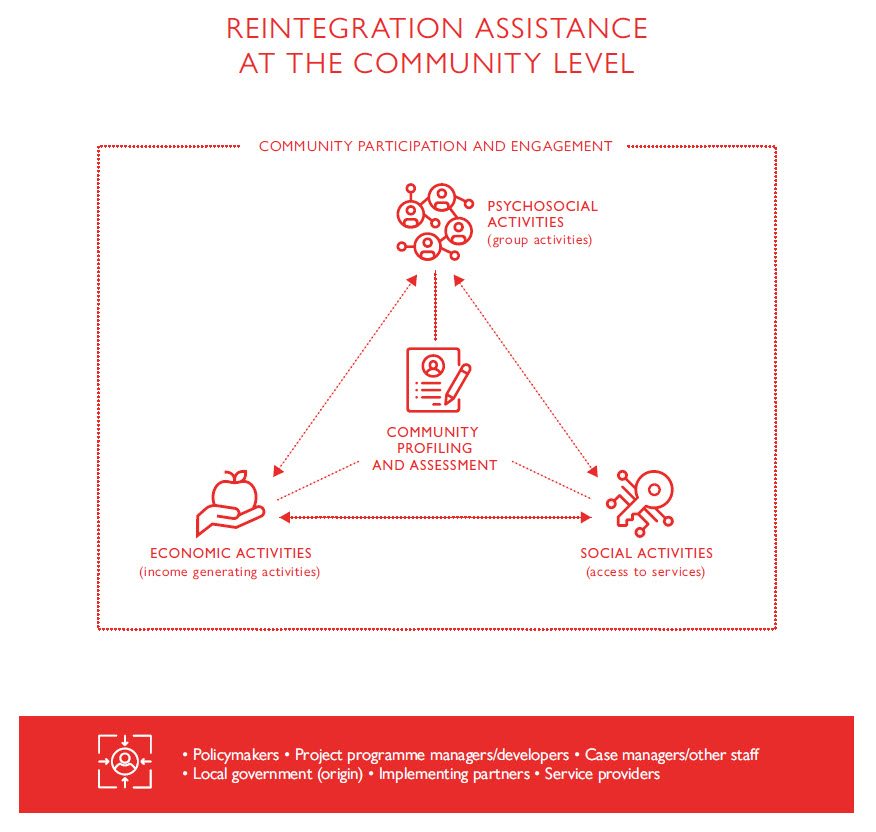Key Messages
Introduction

The situation in communities of return greatly influences the reintegration process. Communities with strong social networks and access to resources can provide support and protection to returnees and themselves benefit from the reintegration process. But when communities are unable to provide these networks and resources, the experience of return can constitute a risk factor for the community and the returnees.
Furthermore, returnees may not always be readily accepted into a community, even if it was their community of origin. Perceived or actual economic competition for jobs, strains on services and infrastructure in highreturn areas, and stigmatization of returnees are all potential barriers to successful reintegration. These barriers also prevent communities from taking advantage of new skills or experiences the returnees can share with them. These strains and stresses on a community are more likely when there are larger numbers of migrants returning to a community in a short period of time.
Because working in all return communities is not usually feasible within the scope of a reintegration programme, assistance is best targeted to communities with a high concentration of returnees and where specific problems have been identified that could be addressed by the programme. These problems could be stigmatization, lack of jobs or strains on services. In addition to this, community-level interventions should be undertaken in locations where local authorities are motivated to support reintegration and there is a basic level of infrastructure and security.
Working with communities facing these challenges to better accept, support and include returnees is important for sustainable reintegration. To be successful, it is strongly recommended that community-level interventions involve and benefit both returnees and non-migrants. Though these interventions look different in different contexts, working from needs’ assessments and working with established networks can be a good way to identify initiatives and actions that have higher chances of relevance and impact.
Reintegration interventions at the community level should be participatory: they should be designed and decided upon in partnership with community members, both returnees and non-migrants. This way, interventions can be appropriately matched to people’s strengths, resources, needs and concerns. This fosters sustainability of reintegration. Participatory methods can also help reduce actual or potential tensions between returnees and community members, because they bring an understanding of wider needs and concerns beyond the individual returnees, and help address these.
In addition, community-level initiatives should:
- Focus on the short- and medium-term to address community barriers to reintegration;
- Foster dialogue, social cohesion and empowerment;
- Support the resilience of returnees and the community;
- Support the longer-term sustainability of intervention outcomes.
This Module covers how to understand community-level risk and protective factors and assist communities so that reintegration can be as supportive and beneficial as possible. It examines how to conduct comprehensive community needs assessments, develop collective and community economic projects, make services accessible and tailored to returnee and community needs and empower returnees to share their experiences and form community support networks.